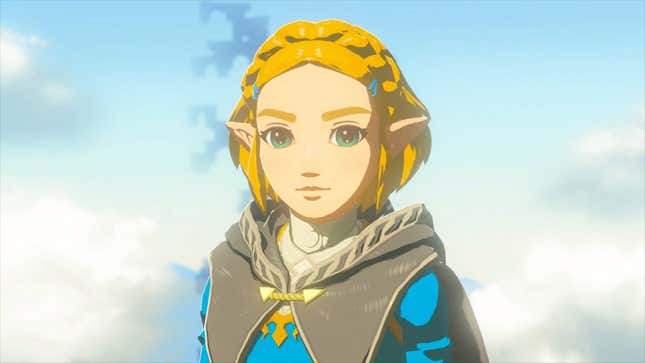
Nintendo is registering several new patents from The Legend of Zelda: Tears of the Kingdom that are extremely broad, to the point where they seem unreasonable for other developers to be beholden to.
Automaton, a gaming website that focuses on Japanese games like Zelda, has a roundup of the 32 patents Nintendo put forth. Some of them are specific to Link’s latest adventure, including things like Riju’s lightning ability, which lets the player target enemies with a bow and bring down a lighting strike wherever the arrow lands. The weirder ones are related to baseline game design and coding that applies to plenty of other video games on the market. One of the hopeful patents relates to the physics of a character riding on top of a moving vehicle and reacting dynamically to it in a realistic manner.

The distinction, according to Automaton’s translation of Japanese site Hatena Blog user nayoa2k’s post on the matter, is down to how Tears of the Kingdom codes these interactions. Link and the objects he rides on move together at the same speed, rather than Link being technically stationary on top of a moving object as is common in the physics of other games. The two are functionally the same, but given that plenty of video games displayed characters who can walk around on top of moving vehicles, it’s highly unlikely this kind of approach hasn’t been utilized before.
On top of trying to patent the tech, Nintendo seeks to patent the loading screen that shows up when the player is fast-traveling across Hyrule. This specifically refers to the screen that shows the map transition from the player’s starting point to their destination. Sure, that’s pretty specific and not something every game utilizes, but it’s still such a general concept that it feels almost petty to patent it when it’s hardly an iconic draw of Tears of the Kingdom.
It’s not uncommon for game developers to try to patent mechanics and features. One of the most famous examples is when Bandai Namco had a patent on loading screen mini-games, which finally ended in 2015.
Who knows if these patents actually go anywhere? But when game design concepts are gatekept like this, it only leads to a loss of innovation for other devs. Though these specific patents are small in the grand scheme of things, they can be a slippery slope for things like WB patenting Shadow of Mordor’s Nemesis System, which should be in more games.























